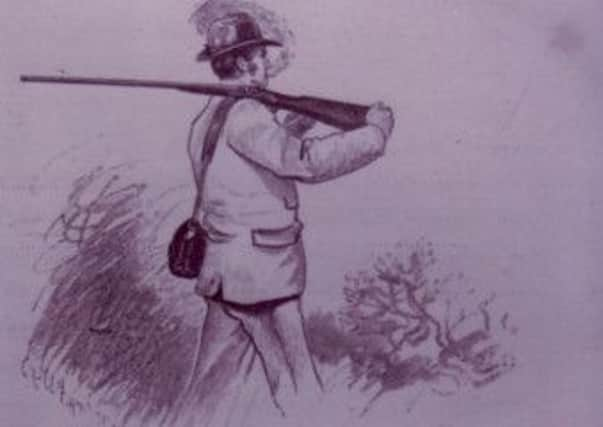When behaviourin the field wasa vital factor


Here Edward VII was entertained in extremis. His luncheon hut is now my garage. The red white and blue silk drapes were still hiding the woodwork in 1947 I am told. I still find this brass 12 bore cases (Purdey of course) in my garden.
With the season running from October 1 to February 1 many spent the whole winter on the circuit, one shooting party after another producing hundreds of thousands of pheasants for the market. In 1885 a pheasant was expensive at two shillings but that was less than the price of a chicken. Customers were middle class and could afford the luxury.
Advertisement
Hide AdAdvertisement
Hide AdAs an example of this industry Lord Stamford of Bradgate Park shot 4,045 pheasants in four days in 1884 with eight guns. Lord Malmesbury shot 6,320 to his own gun between 1798-1840. Servicing this industry was an army of gunmakers, powdermakers, bootmakers, ironmongers, dog breeders, coppice cutters, cooks, chambermaids, butlers, housekeepers, gamekeepers, grooms, beaters . . . and, as Michael Portillo would say, the railway industry too. There were in those days, hundreds of Downton Abbeys.
Shooting etiquette was taught alongside the Latin primer in the nursery. Not the least was gun safety. “Never, never, let your gun, pointed be at anyone. That it may not loaded be, makes no difference unto me” was a catechism of confirmation when the “young master” first nestled the French walnut stock of his 20b. Lang, Holland, Boss or Purdey onto his tweed shoulder.
In books which I inherited from my grandfather, who was on a minor shooting circuit, I found in the pages of the Badminton Library series these drawings of how to hold a gun and how not to.
The so-called “Cockney Press” found much fun with this social spectacle, as did Punch. The Nouveau Riche and “Trades People” got a peppering from cartoonists as they in turn peppered Colonel Blimps in their excitement during a “Royal Flush” of birds.
Advertisement
Hide AdAdvertisement
Hide AdBehaviour in the field was vital. Dukes and Royals might be allowed amiable eccentricity as they poached flying shots off their neighbour’s nose. The rest were not allowed to be jealous, greedy or boasting. They never wounded birds, but brought them down fit for the table. They were, according to the old literature, “kind and generous to keepers but never familiar”. They could stand up cheerfully to friendly banter.
Above all, they were men (women did not really appear on the battlefields until after the First World War) with “wonderful aptitude for observing the habits of wild birds and animals, with wonderful command of eye, hand, and nerve, and could excel in athletic field sports, such as cricket, riding, fishing and billiards . . . amusements dear to the hearts of Englishmen. Down to their last button, they were as perfect as may be.” How do the modern shots compare today?